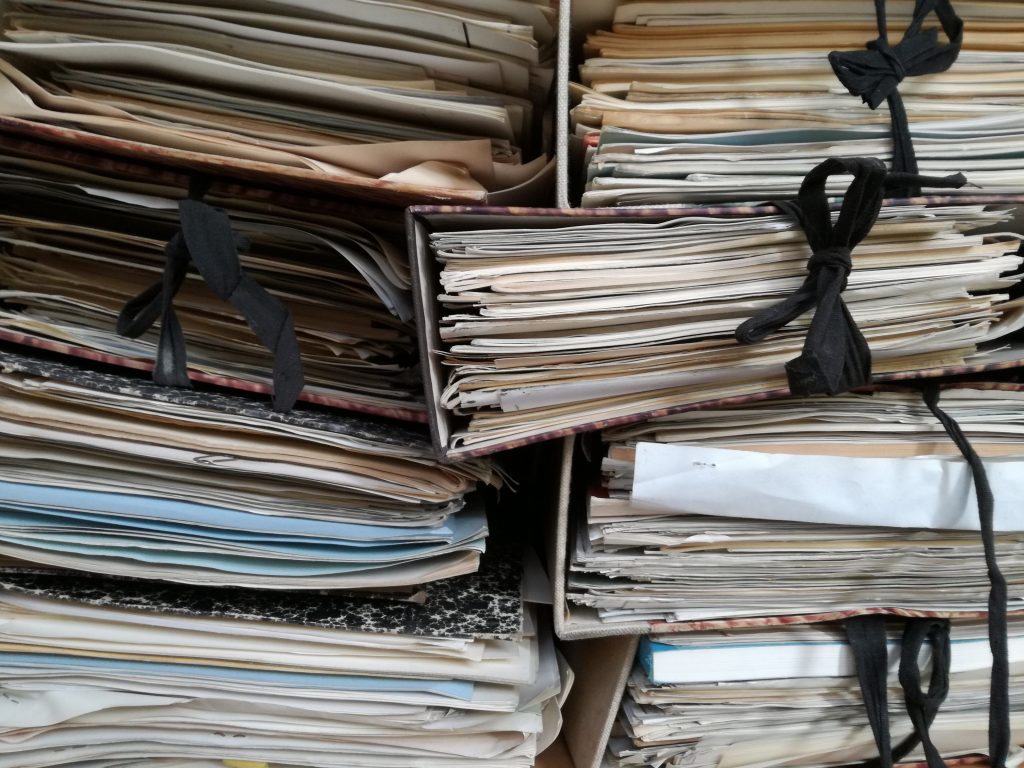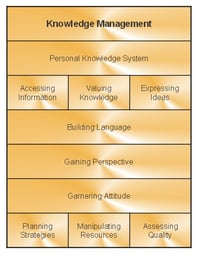Published on
A Guerilla Guide to Comprehensive Learning Records

Much of what has been written on Comprehensive Learner Records (CLRs) has focused on how these digital records will be integral to the future of education. It is hoped that CLRs will help students and institutions organize and make sense of a world where everything is stackable and support the development of a crosswalk from noncredit to credit (and back again). CLRs will support the move to educational models where micro-credentials are widely used, understood and accepted by all educational institutions in the credit transfer process—and by employers in their hiring practices.
Students will be lifelong learners who see little distinction between their undergraduate degrees, what they have learned with nontraditional education providers and what they have learned on the job in their various careers. The dream is that all of this will live in a secure, verified digital document that can easily be transmitted, possibly based on blockchain technology and accessible by the student throughout their life.
Many faculty members and administrators will nod along to this kind of description of the future utopian state of education, but when thinking through how it fits into a university strategic plan or list of priorities, it often appears low on the list because institutions say they are not ready.
We are not at a point where our data systems have student data organized in a way that allows us to feed them into a CLR and have a meaningful representation of student learning on the other side. We are not at a point where all our programs have skills mapped to the learning unit level or assignment level. We do not know how to represent workplace learning in our official university systems with the level of confidence required for something that has the registrar’s stamp of approval.
We do not need to wait until we have solutions to all these problems. The CLR is not the culmination of this work but should allow for a process of continuous improvement that highlights areas of opportunity and moves us in the right direction. At University of Maryland Global Campus (UMGC), we learned quickly that the concept of a CLR is versatile, and its purpose can be unique and driven by student needs. However, we would not have known this if we had waited for all conditions to be perfect before launch.
UMGC is often at the cutting edge of innovation in higher education. We were early adopters of online education, having previously flown professors around the world to teach students on military bases in Europe and Asia. We did away with textbooks for most classes in favor of OERs when many had not yet heard of them. But this rich history is a double-edged sword: For all the innovation, UMGC is a legacy institution. Our programs were not built to be disaggregated into skill specific units. Our data systems were not designed for student learning data to be ingested by a CLR.
And yet, we have awarded CLRs to thousands of students. While we have the benefit of being able to scale up to large numbers of students, the number is not what’s important. Rather, we are dealing with the same issues faced by most institutions that want to create a CLR: how to take a legacy 20th-century approach to education as the input for the digital document of the future.
Waiting until our data infrastructure is in place and programs are fully mapped, perhaps with each assignment a demonstration of a market demanded skill, means never taking the first step towards a CLR. The CLR is not the culmination of perfect systems and programs; rather, it should be in conversation with an institution’s systems and programs so that we create a virtuous circle of continuous improvement. The first iteration of a CLR may not be ornate or developed exactly like the blueprints in your head, and it will not solve all the problems that it is hoped to solve. But it will show that a CLR is possible and make clear some of the current limits of your data and infrastructure.
Once the CLR is moved from a concept case to a tangible product that students use, it empowers us to do a few things. The document can be socialized with students, staff, faculty and employers. This generates interest and allows us to articulate the value and opportunities from multiple perspectives. Secondly, it allows the institution to learn and improve upon the original, paving the path for continuous improvement. The data that go into it can be improved upon to make clearer what students learn and where they demonstrate that learning. The programs represented in the CLR can be improved once we have a better understanding of the strengths and weaknesses.
If you see value in a CLR, and you have a desire to get this off the ground at your institution, here are tried and true recommendations from our lessons learned.
1. Understand Your Data
The data you have access to regarding your students’ learning will determine what you can put in a CLR. The old saying “garbage in, garbage out” can be modified to “nothing in, nothing out” for the CLR. If you only have final grades at the course level, you naturally cannot say with much confidence which skills or what knowledge a student might be able to demonstrate. But do not let this stop you from moving forward. Find the data that exists in your systems and separate out what you can use. Is there a period with clean usable data? From there, partner with the academic department(s) to build out the mappings you need to reflect a student’s performance and learning and start organizing this information in one place. For institutions that have assignment-level data, there is the opportunity to highlight certain areas of expertise that a student might not otherwise know to highlight. For institutions with assignments and modules mapped to skills, there is the opportunity to clearly demonstrate what knowledge, skills, abilities and dispositions (KSADs) students can demonstrate and where they have shown them.
The data on any given program changes over time. A course may keep the same name and course code but provide vastly different content in 2022 than what it did in 2012. Curriculum management systems can keep track of these changes. But even then, the data may not be representative of all changes over time. In order to keep things simple, we recommend beginning with a new cohort of students. This may mean that you will not be able to offer the CLR to as many students as you would like. However, once the CLR has been created, it is a tangible example of the need to record curriculum changes in a more detailed way than was necessary before. In this way, the conversation between the future (CLR) and the past (current systems and programs) begins to take place.
2. Determine a Starting Point
Start small: UMGC started with the MBA program, as this program rarely allows students to transfer in credit. Students take one six-credit course at a time, and the courses must be taken in order. This made our task much more manageable than beginning with an undergraduate program at one of the most transfer-friendly universities in the country (undergraduate programs also have general education, which can be thought of as a second program within the degree). The MBA program has also motivated faculty who were excited to work with us on creating something useful for their students. As a university that prides itself on being student-centered, creating buy-in was made easier by focusing on CLR as a student service.
The faculty decided there were several subject areas where students demonstrate knowledge of a certain topic, but that is not communicated in a transcript. For example, a student might get an A in several projects that focus on global business. But because global business is infused throughout the program, there is not one course specific to global business. The faculty used the CLR to help resolve this issue by creating several digital badges that students could earn if they earned high grades in projects that focused on several areas. Students who earn high grades in relevant projects can earn several badges: Business Communication, Organizational Leadership, Global Business, Managerial Finance. Badges are awarded to approximately the top 20% of students for each subject area.
3. We Have a CLR! What Else Can We Do With It?
Once you have a CLR ready to go, ask if it is worth broadening the conversation to consider whether other data should be represented on the CLR for these students. For example, if your CLR is for a business program, is there a digital badge that can be created for membership in a club or honor society? Where does the data for this live? Where should the data live? Manually bridging the gaps between the data as they are and as you would like them to be is a great way to acquire the proof of concept required for buy-in from other stakeholders and decide how data systems should be improved to allow for a more student-centered approach to data. At the moment, we manually upload data for several digital badges while we work through how we can automate this process.
Options for Hosting a CLR
IT resources are often scarce, and that can make getting a project like this off the ground difficult. However, if creating a digital document in-house is not an option, there are many edtech companies that will partner with you on supporting a CLR. UMGC partnered with Parchment on creating the MBA CLR. This made perfect sense for us, as our other transcript services are already hosted through Parchment.
Adopt a Standard
According to the 2021 AACRAO Report: A Practical Guide for Campus Personnel, “the 1EdTech CLR Standard™ is the mechanism by which issuers of CLR can convey information to other parties or ‘consumers’ of the contents (colleges, universities, employers, agencies).” At the end of the day, we want to ensure the records we create can be shared, and the elements represented on the documents are commonly understood. While not the flashiest aspect of the CLR project, this is certainly one of the most important in creating digital strategies.
4. Share How You Did It!
Once you have determined an approach, start sharing it with others! Share internally to build momentum and gain interest; share with other higher education institutions to create a circle of learning; and once you have a tangible product, share it with students and others who can use it to test and see if it meets the defined objectives.
Going through the process of creating a CLR will make clear what data are recorded on students’ learning and progress throughout their programs. Often, we have anecdotal evidence of available data, which turns out to be wishful thinking once we actually try to use those data. Creating your first, least perfect CLR will help you understand what gaps exist in your data, in what ways your data systems need to be improved and what opportunities exist to strengthen your programs. Our own experience has shown that students are excited to get hold of this type of document, as it helps them communicate their knowledge, skills, abilities and dispositions, both to current and prospective employers. And it can be a motivating tool, as it shows how close they are to completing their goal of graduating. While many benefits of CLR may be theoretical, there are enough concrete benefits to begin working on this project now, understanding that is the first step but not the last.
At UMGC, undertaking the process of creating a CLR was a learning journey. We determined what was possible and put a plan in place by removing everything we could not do and focusing on what we could. We debriefed about the foundational pieces in our data, technology and program structures that need to change to support further digital credentialing efforts. We learned from students, faculty and alumni about a CLR’s utility, content and function. Most importantly, we learned that this type of tool empowers our students to articulate who they are and what they are capable of. This brings them closer to achieving their goals and aspirations. As an institution, we now have information that allows us to continue building our digital platform with confidence. We wish you the same outcome as you embark on creating a CLR that is right for your institution and your students.
Author Perspective: Administrator



